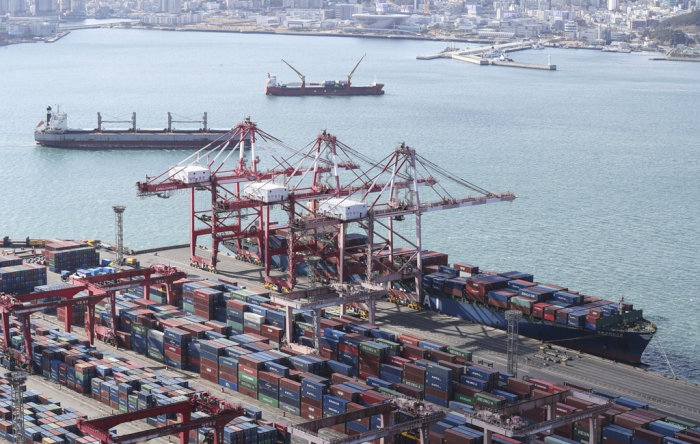[Exclusive] Economy
Korea 2021 GNI per capita to top $35,000 to record high
Higher economic growth, inflation, won’s value boost GNI per capita to its first rebound in three years
By Dec 06, 2021 (Gmt+09:00)
2
Min read
Most Read
LG Chem to sell water filter business to Glenwood PE for $692 million


Kyobo Life poised to buy Japan’s SBI Group-owned savings bank


KT&G eyes overseas M&A after rejecting activist fund's offer


StockX in merger talks with Naver’s online reseller Kream


Mirae Asset to be named Korea Post’s core real estate fund operator



South Korea’s gross national income (GNI) per capita is expected to surpass $35,000 to a record high this year on strong economic growth, surging inflation and the firm won currency.
The GNI per capita is forecast to grow 9.8% to an all-time high in 2021 from $31,880 last year, the largest growth since 2010 when income rebounded 20.9% following the 2008-09 global financial crisis, according to the Bank of Korea and investment banking industry sources on Dec. 5.
The current record is $33,564 logged in 2018. But the GNI per capita fell for two straight years after hitting that peak. Last year, Asia’s fourth-largest economy contracted by 0.9%, hit by the COVID-19 pandemic, while the US-China trade dispute hurt economic growth and the South Korean won’s value in 2019.
GNI per capita is the dollar value of a country’s final income in a year, divided by its population.
In 2021, real gross domestic product (GDP) growth, the GDP deflator and the won’s value – key components of the GNI per capita – are significantly higher than last year.
The Bank of Korea expected the economy to expand 4% this year despite record COVID-19 infection rates with the onset of the new Omicron variant.
The GDP deflator, a measure of the level of price increases for all the new, domestically produced, final goods and services in an economy in a year, stood at 2.2% in the first three quarters of this year. The GDP deflator is more likely to exceed that level for full-year 2021 since annual consumer inflation is predicted to top 2.4%.
The won has averaged 1,141.29 against the dollar so far this year, appreciating 3.4% from the 1,180.2 average versus the US currency in 2020. The South Korean currency weakened to an 11-year low of 1,285.7 on March 19, 2020, at the height of COVID-19 fears, and remained around the 1,200 level during the first half of last year. The local unit, however, rebounded to trade between 1,050 and 1,150 in the first half of 2021.
The GNI per capita is forecast to rise to $35,000 this year if economic growth, inflation and the won maintain their current levels.
The local economy is, however, still facing challenges. Soaring inflation reduced real purchasing power, while employment conditions for people in their 20s and 30s remain weak. The number of employees in their 30s fell 24,000 in October from a year earlier.
Write to Ik-Hwan Kim at lovepen@hankyung.com
Jongwoo Cheon edited this article.
More to Read
-
 Central bankingBank of Korea raises interest rates, signals further hikes
Central bankingBank of Korea raises interest rates, signals further hikesNov 25, 2021 (Gmt+09:00)
3 Min read
Comment 0
LOG IN


